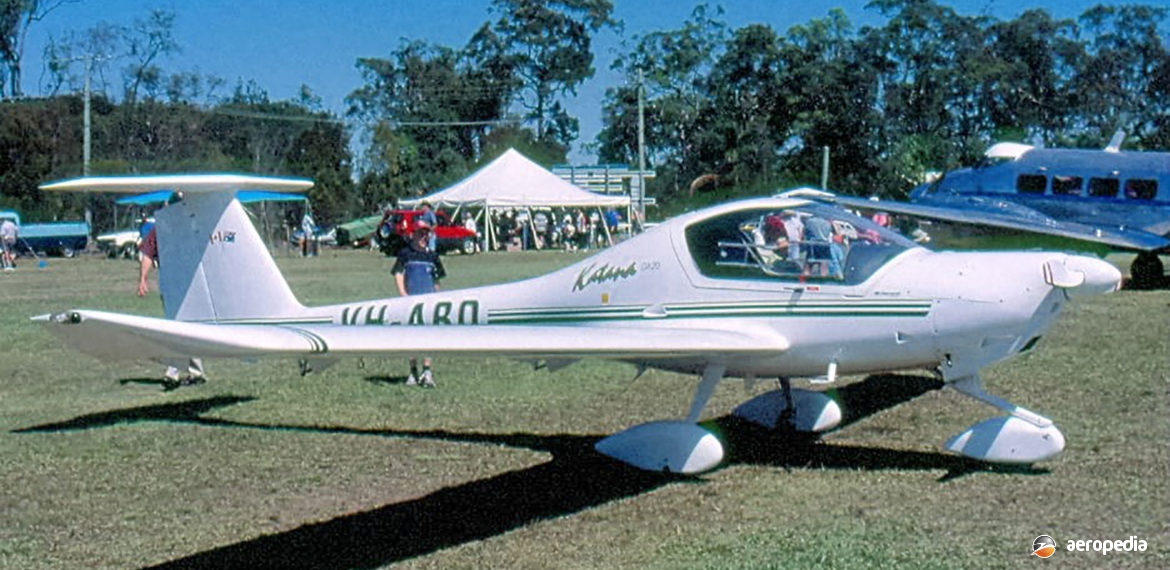Photograph:
HOAC Katana DV-20 VH-ABD (c/n 10100) at Caboolture, QLD in September 2002 (David C Eyre)
Country of origin:
Austria
Description:
Two-seat touring and primary training aircraft
Power Plant:
One 60 kw (80 hp) Rotax 912A four-cylinder horizontally-opposed liquid-and-air-cooled engine
Specifications:
- Wingspan: 11 m (36 ft 1 in)
- Length: 7.1 m (23 ft 3½ in)
- Height: 2.1 m (7 ft 10½ in)
- Wing area: 11.616 m² (125.03 sq ft)
- Max speed: 235 km/h (145 mph)
- Cruising speed at 75% power: 214 km/h (133 mph)
- Max rate of climb at sea level: 222 m/min (728 ft/min)
- Service ceiling: 4000 m (13,125 ft)
- Stalling speed flaps down: 83 km/h (52 mph)
- Range at 75% power with 30 mins reserve: 765 km (475 miles)
- Empty weight: 505 kg (1,113 lb)
- Loaded weight: 730 kg (1,609 lb)
History:
The DV-20 Katana was a two-seat training and touring aircraft produced by HOAC Austria Flugzeugwerk at Weiner Neustadt, being basically a development of the Dimona and Super Dimona motor gliders. A prototype (OE-VPX), or proof of concept aircraft, was flown for the first time on 16 March 1991, known as the LF-2000, the prototype LF-2 Katana (OE-CPU) flying in December 1991. The DV-20 prototype (OE-AKL) followed in November 1992.
The Katana was an all-composite low-wing monoplane with a T-tail, side-by-side seating, and a fixed tricycle undercarriage. Power was provided by the Rotax 912A engine driving a two-blade constant-speed propeller. Fuel capacity was 80 litres (17.6 Imp gals).
The type became quite popular and a production line was set-up in Canada (where it was known as the Diamond Katana) to meet an initial order for 180 aircraft for the North American market.
First of the type in this region arrived early in 1995, being a HOAC-built DV-20-A1 carrying the registration N86DV, subsequently being demonstrated in the eastern States before becoming VH-ABD (c/n 10100). Since then further examples have been imported, these being from the Canadian production line. Further development of the type led to the Diamond DA-20 and the development of the DA-40 series, a variant of which was fitted with a Thielert diesel engine.

